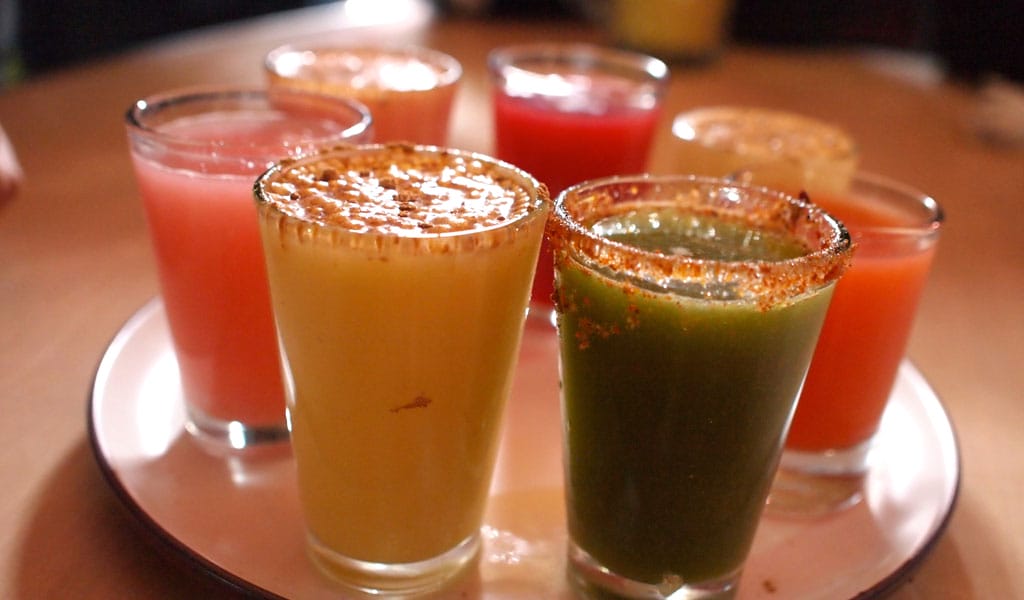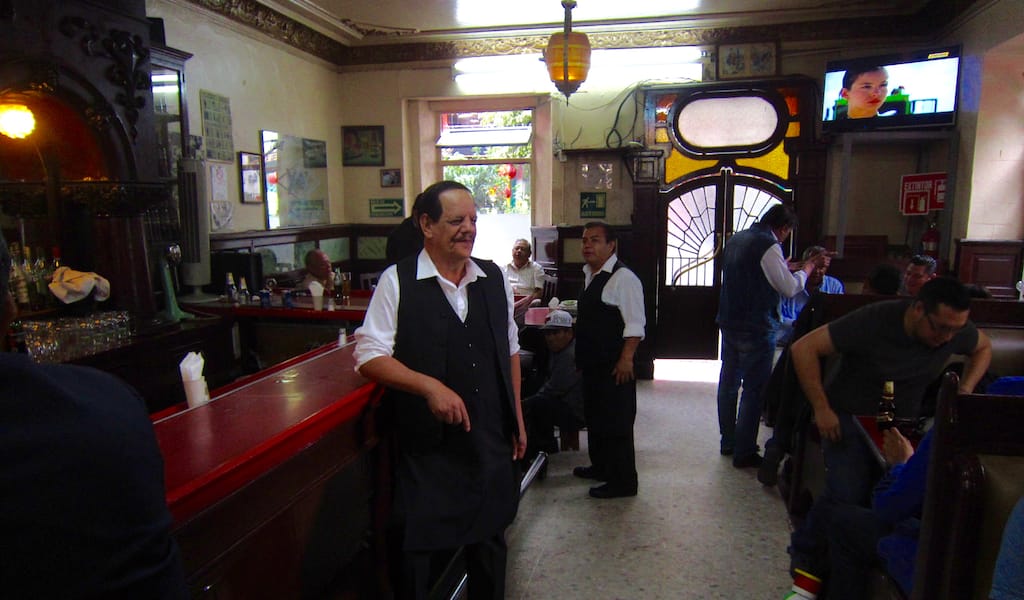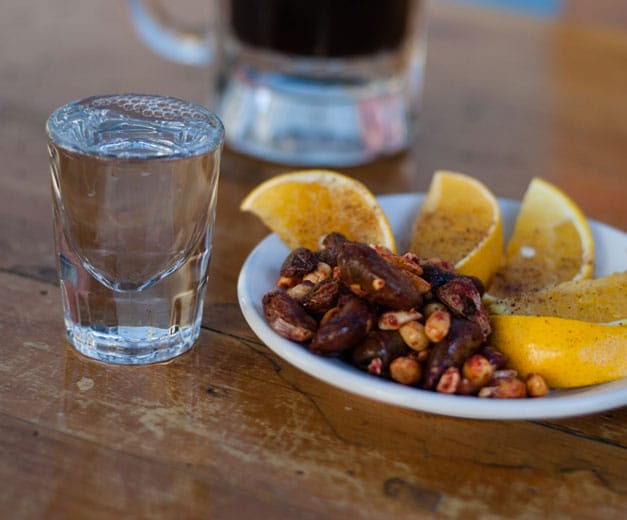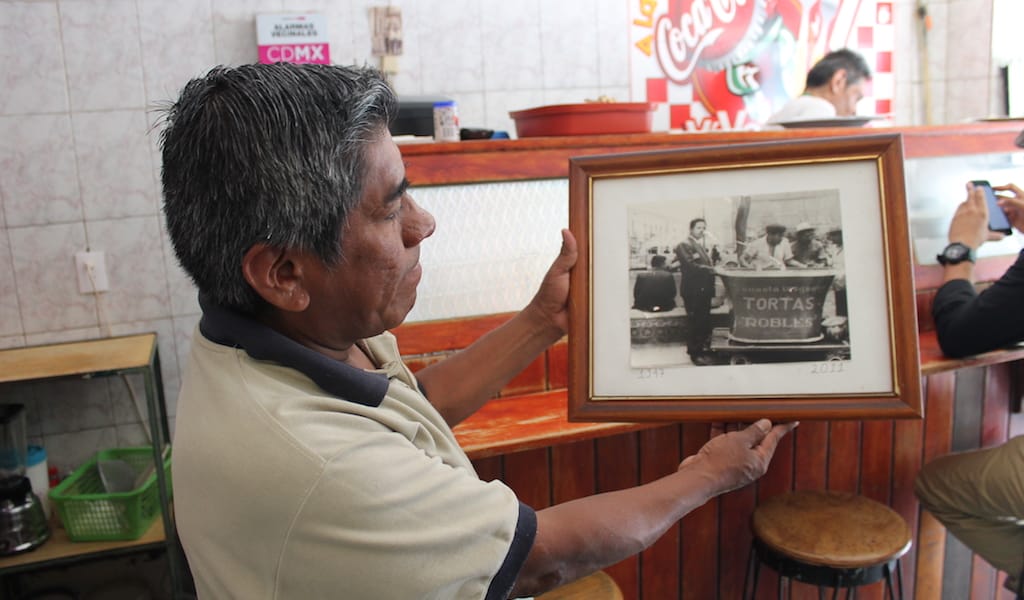Milky, tart, viscous and slightly foamy. At first glance and sip, there’s little to explain why pulque – a mildly alcoholic drink made by fermenting the fresh sap of certain types of maguey, the same plant used for making mezcal – has remained a trusted companion to Mexican drinkers since Aztec times. Pulque, actually, has not only survived, but, after decades of losing ground to beer and soft drinks and their high-priced marketing campaigns, this workingman’s brew is making a comeback.
New pulquerías are popping up in hip Mexico City neighborhoods and attracting a younger crowd while old pulquerías, which endured some lean times, are seeing an influx of new customers, who now sit side-by-side with older generations of loyal pulque drinkers. Nobody really seems to know why the previously unheralded nectar has been getting this much attention in the last few years, but several places around town have been capitalizing on this new trend with great success.
Pulque is a fresh drink with a very short shelf life. After the sap, called aguamiel in Spanish, is extracted from the maguey it starts to quickly ferment, to the point of being undrinkable. To slow down this process, sugar and different natural flavoring ingredients are added to the pulque to create what’s known as a curado. Traditional pulquerías used to be open from very early in the morning until very late at night, with people sitting for hours sipping pulque – which, depending on how fresh it is, has an alcohol content that can range from two to five percent – and getting food and snacks from the pulquería’s kitchen. Traditionally for men only, pulquerías in the mid-20th century starting adding small rooms where women could sit together and enjoy a drink. In recent decades, women have not only been fully accepted at pulquerías, but some spots have even become family friendly, with the grownups sipping their pulque while the children drink soda and eat snacks.
One of our favorite neo-pulquerías is Mexicano, a small bar in the Centro Histórico that also specializes in pouring artisanal beer and mezcal. Mariano Vera, owner of Al Andar, a small mezcalería in downtown Mexico City, opened it a couple of years ago and has been experimenting with mixing his pulque with exotic fruits and interesting Mexican ingredients, such as zapote negro, a kind of sweet squash (although the house drink, the dangerous tlachiquero, is made simply from mezcal, pulque and agave syrup). The pulque Vera serves comes from small producers in Estado de México, Hidalgo and Tlaxcala, states that have a long tradition of making the stuff.

Expendio de Pulques Finos Insurgentes, another modern pulquería, is located in what used to be an old house on a busy avenue in the hip Roma neighborhood. The sitting area is located where the house’s garage used to be, and it extends to the back of the house, where the bar sits now. A jukebox with an eclectic selection of music is always playing loudly, from rancheras (traditional Mexican folk music) to heavy metal. During the weekends live groups, usually rock bands, play on the second floor, creating a modern and youthful vibe, with local hipsters drinking unadulterated pulque blanco and sweetened curados from half-liter or one-liter metal cups.
For a taste of pulque’s earlier and grittier days, we like to head to Las Duelistas, an 80-year-old pulquería in the Centro Histórico that has re-branded itself to appeal to a younger crowd. Inside the always-crowded one-room bar, the walls and ceilings have been covered with pre-Hispanic motifs painted in bright colors, making the place feel like a psychedelic Wild West saloon. Besides the traditional pulque blanco they offer curados in numerous flavors. Guava, celery and a thick curado fortified with oatmeal are among the regular offerings, while flavors like mango, strawberry, blackberry and passion fruit appear in season. Other flavors, such as walnut, coffee, chocolate, and peanut pop up on the menu now and then, giving customers a few more reasons to come back.
La Frontera, a rustic pulquería on the hillside of Ajusco Mountain, some ten kilometers south of Mexico City, might just be the ideal spot to truly savor pulque and its charms. Getting to this pulquería in the middle of the woods takes some time and effort, but the trip is worth it.
Sitting at the end of an unpaved road off the main highway to the top of the mountain, La Frontera is actually one of three pulquerías on that road. The place is as simple as it gets, nothing more than an old wooden cabin with a few metal tables and chairs inside and out and plastic sheets covering the roof. Up on the walls are posters of Marilyn Monroe and old Mexican movie stars, while a jukebox plays a mix of Mexican rancheras, cumbias and pop. On the bar sit only two vitroleros, big glass containers that contain the curados of the day (guava and oatmeal when we visited). Behind the bar, a big wooden barrel holds pulque blanco that is unceremoniously served in one-liter plastic buckets to customers.
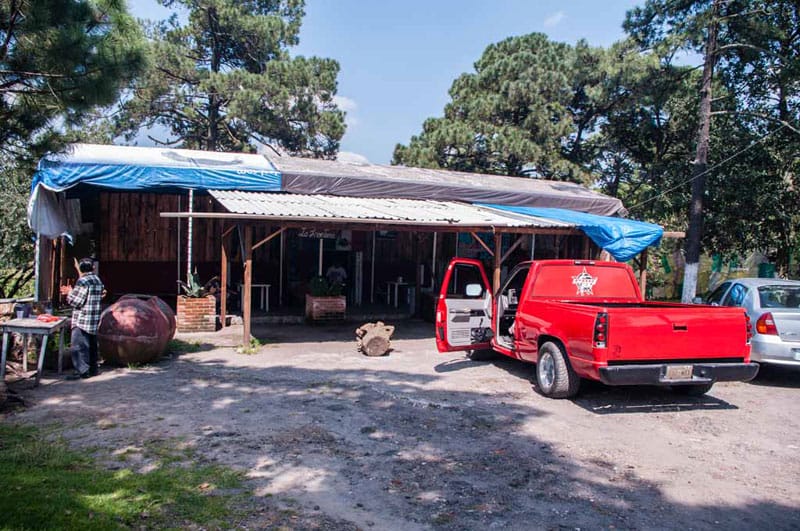
“This place is family friendly,” Estela Gaytan, the owner, told us. “We’ve been in business for 15 years. My father-in-law was a pulque producer and he decided to open a pulquería here in Ajusco. There is no more pulque production in the area, but we get fresh pulque every day from the state of Hidalgo.”
What is it about pulque that brings all generations together, that draws fans deep into the woods for a drink, that is the oldest of Old School and yet totally punk at the same time? We don’t quite know, but we continue to look for it at the bottom of every glass of pulque.
This feature was originally published on October 18, 2013.
 March 23, 2019 Behind Bars
March 23, 2019 Behind Bars
For every level of society inside and outside Mexico, cantinas serve as both toxin and […] Posted in Mexico City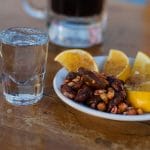 February 21, 2014 Mezcalerías
February 21, 2014 Mezcalerías
Editor's note: For our last stop on CB's Global Bar Crawl this week, we're pulling up a […] Posted in Mexico City December 19, 2018 Best Bites 2018
December 19, 2018 Best Bites 2018
The memory of 2017’s devastating earthquake still lingers in the minds of many in Mexico […] Posted in Mexico City
Published on April 07, 2017
Related stories
March 23, 2019
Mexico CityFor every level of society inside and outside Mexico, cantinas serve as both toxin and tonic for drink, song, jocularity, wit, mayhem and mishap. Tio Pepe, now thought to be the oldest such bar in the old Aztec capital, has provided both in equal measure since way before it received its present name in 1878.…
February 21, 2014
Mexico CityEditor's note: For our last stop on CB's Global Bar Crawl this week, we're pulling up a stool at our favorite mezcal bars in Mexico City, kicking back and savoring every last drop. Para todo mal, mezcal. Para todo bien, también. Y si no tiene remedio, tómate litro y medio. For everything bad, mezcal. For…
December 19, 2018
Mexico CityThe memory of 2017’s devastating earthquake still lingers in the minds of many in Mexico City, but perhaps the biggest challenge the city faced in 2018 was gentrification. Ambitious development initiatives have resulted in safer neighborhoods; however, the cost of real estate has soared, leaving many long-term residents and business owners at risk for eviction,…







































